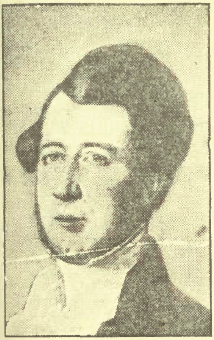William Henry Boulton
William Henry Boulton (April 19, 1812 – February 15, 1874) was a lawyer and political figure in Canada West. He served as Mayor of Toronto from 1845 to 1847, and in 1858. He was also a member of the Orange Order in Canada. Boulton died in Toronto in 1874.
William Henry Boulton | |
|---|---|
 | |
| 8th Mayor of Toronto | |
| In office 1845–1847 | |
| Preceded by | Henry Sherwood |
| Succeeded by | George Gurnett |
| In office 1858–1858 | |
| Preceded by | John Hutchison |
| Succeeded by | David Breakenridge Read |
| Personal details | |
| Born | April 19, 1812 York (Toronto), Upper Canada |
| Died | February 15, 1874 (aged 61) Toronto, Ontario |
Life and career
Boulton was born in York (Toronto) in Upper Canada in 1812, the son of D'Arcy Boulton (1785–1846) and the grandson of G. D'Arcy Boulton. He studied law and entered practice with Gamble and Boulton. He was also a keen cricketer, and his public support of the Canadian cricket team is said to have significantly furthered his political ambitions.[1]
He was first elected to Toronto city council in 1838. In 1844, he was elected to the Legislative Assembly of the Province of Canada, representing Toronto as a Conservative member, and he was re-elected in 1848 and 1851. He opposed the bill making King's College a secular institution; at that time, it was affiliated with the Church of England in Canada. He supported making the Legislative Council elective. He was supported by the Orange Order in Toronto and was also viewed as a member of the Family Compact. In 1854, he became deputy grand master for the order in British North America. After he left politics, he continued to practice law.
His former residence, "The Grange", is now part of the Art Gallery of Ontario. The Boultons were said to be very hospitable people and hosted many guests at the Grange. Lord Elgin, when Governor-General of Canada, was a guest of Boulton in the home when he was Mayor of Toronto. It received the name the Grange after the family estate in England. Boulton lived in the home until his death in 1874.[2]
References
- Adams, p. 188.
- Peppiatt, Liam. "Chapter 19: A Sketch of the Grange". Robertson's Landmarks of Toronto Revisited.
Sources
- Adams, P. (2010) A history of Canadian cricket, lulu.com. ISBN 978-1-4466-9652-1.